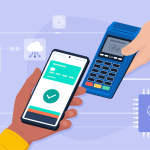There’s a reason marketers don’t wrap up blog posts, case studies or even eBooks with the words “THE END.”
It’s because, if the marketing team has done its job right, the real story is only beginning as the audience finishes with the content.
Brands know they need to attract customers and prospects from the very start, whether it’s a written asset, a video or a podcast.
They also know the audience won’t stick around if they’re not getting lots of value, whether it’s education to address their pain points or inspiration about how they could achieve greater fulfillment.
If customers and prospects finish with the content and simply go on with the day, however, something has gone horribly wrong.
Where B2B or B2C, the vast majority of marketing content needs to include a call to action (CTA). A brand should be suggesting, encouraging, asking or even urging its audience to do something specific based on the story they’ve just been told.
Where Marketing CTAs Can Lead
Your CTAs sit at a pivotal moment in the customer journey. In many cases, the journey might have begun with a customer or prospect finding your website through search or social media. Once they land, the content your marketing team creates should help them see your brand as credible, and a possible resource for whatever they’re trying to do.
The CTA forms a bridge between informative and even enjoyable content and the next stage of the journey: to a paying customer.
Although some CTAs can be as simple as taking the audience to your product pages, there are many other possibilities. These include:
-
Connecting with the sales team to learn more about their specific needs.
-
Seeing a demo of the product, whether online or in-person.
-
Offering their contact details via a form to receive more marketing materials that are relevant to them.
-
Taking a survey to help bolster research that will serve them and their peers.
-
Downloading your brand’s mobile app.
-
Registering for an event or course your brand is offering.
-
Entering to win a contest or special promotion.
-
Offering feedback on a previous experience with the brand.
-
Navigating to self-service resources to troubleshoot a common issue.
Although they often appear towards the end of a content asset, the most successful marketing strategies identify and confirm the CTA from the very beginning. This not only ensures the content being produced will have business value. It can also be a way of helping to structure and outline the story you’re telling so that the CTA feels natural, rather than something bolted on.
The Most Common Approaches to Setting Up Marketing CTAs
CTAs can also take a number of forms, depending on the content you’re delivering to your audience. The following are just a few you could consider as part of your strategy:
1. The Link
In an increasingly digital-first world, it only makes sense to build a CTA that drives directly to a relevant URL.
Of course, if someone is already on your website there’s no need to point them to your home page. Instead, think through where they would most benefit from visiting next — or where you want to guide them on their journey.
Besides a product page, some CTA links will bring up a case study that talks about a customer following through on the advice offered in a blog post. Other links might be to your store or even a third-party marketplace.
Be sure to embed CTA links naturally into the text. Have your URL connected to active keywords that others might be typing into a search engine, for example.
2. The Button
The risk of relying on links within text is that they get overlooked amid a sea of words. Buttons overcome this by offering more of a stand-out presence, and they mimic the same kind of tools people tend to use when they’re clicking through to make an e-commerce purchase. This reinforces the “call to action” concept.
When you’re using a button for CTAs, think beyond the basics of whether its background colour reflects your brand guidelines. Think about what the words on the button should be.
For example, you might use text just above the button to explain where it will take your audience, which means a simple “click here” might do. That’s not all, though. You could also put words on the button that make the value in responding to the CTA more explicit.
Will learning more about your product allow your customers to cut costs? Maybe the button could say something like, “Show me the money” or “Start Saving.”
3. The Verbal
As marketing content becomes more dynamic and multimedia in nature, you might need to have someone say your CTA out loud.
In a video explainer of your product, for instance, a voice-over could explain the next steps to learn more or to make a purchase.
On a podcast, the host might have CTAs to become a subscriber, a guest or to visit the brand’s web site to get more resources about the topic discussed in an episode.
You can have verbal CTAs that mention URLs too, of course. Just make sure they’re short enough they’ll be easy for someone to remember and look up later.
Setting Up Marketing CTAs for Success
You don’t have to save your CTA until the end of an asset, of course. You can also introduce it early on to save your audience time if they might be ready to move ahead.
You’re also not limited to a single CTA. Many eBooks, for example, will sprinkle several CTAs based on potential tactics readers could take to apply what they’ve learned from specific chapters.
Finally, don’t necessarily let your CTAs remain static. As you measure the performance of your content, look carefully at how many people are clicking through or responding to the CTA you’re offering. If the number is now, change formats. Change wording. Move where you put it.
Calls to action are all about making marketing a bigger driver of business growth. It’s time for brands to get more active in using them.






















